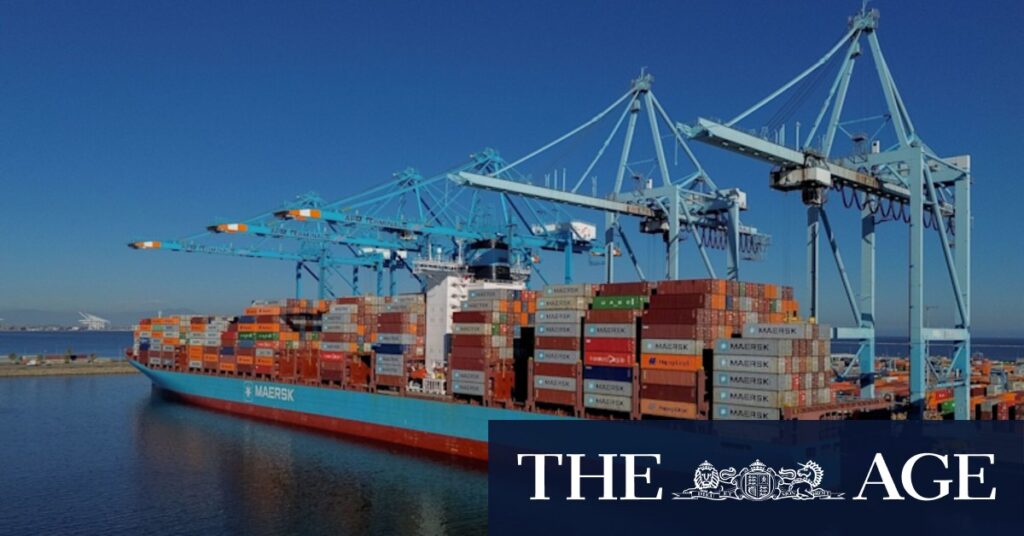
A new front in the ongoing trade wars between the United States and China has emerged this week, as both nations began imposing significant fees on ships built, operated, or financed by their rival when docking at their ports. This development marks a sharp escalation in the trade tensions that have characterized the relationship between the two economic giants.
The United States initiated this tit-for-tat exchange, having foreshadowed the port fees in February before implementing them on Tuesday. In response, China introduced similar charges on the same day, following an announcement just last week. This move comes amidst Beijing’s decision to tighten restrictions on rare earth exports, prompting former President Donald Trump to threaten 100 percent tariffs on all Chinese exports to America.
Background and Context
The origin of the US decision to introduce port charges can be traced back to a report commissioned by the Biden administration. The report accused China of engaging in unfair practices, such as forced labor, artificially low labor costs, state-subsidized funding, and access to cheap raw materials, to dominate the global shipbuilding industry.
China’s dominance is evident, as it constructed nearly 60 percent of the world’s largest vessels last year and has built another 717 this year. In stark contrast, the US, with its limited shipbuilding capacity focused primarily on naval and small boats, has produced only one large vessel. Currently, more than a quarter of all large vessels afloat were built in China.
Economic and Strategic Implications
Non-Chinese shipowners are now scrambling to reroute their ships to avoid docking Chinese-built vessels at US ports. Additionally, there is a surge in refinancing vessels, especially those acquired through sale and leaseback arrangements, where Chinese institutions have significant exposure, nearing $100 billion.
The fees imposed by both countries are substantial and are set to triple over the next three years. For instance, a Chinese-built or operated supertanker docking at a US port next year could incur fees exceeding $6 million, while a bulk ore carrier might face nearly $4 million, and a container ship could see charges of $180 per container.
China’s fee scale, targeting ships with US ownership or control interests of 25 percent or more, mirrors US charges and similarly escalates over the next three years.
Impact on Global Shipbuilding and Trade
The hardest hit by the US fees will be China’s state-owned Cosco, with US investment banks estimating additional port charges of $1.5 billion to $2 billion next year. Conversely, China’s largest targets include vessels carrying US oil and LNG, with supertankers facing similar charges to those visiting US ports. Estimates suggest China’s fees could affect about 16 percent of tankers carrying refined products and 13 percent transporting crude oil to China.
The Trump administration views these charges as an opportunity to rejuvenate the US shipbuilding industry, which is currently almost non-existent. Historically, a robust commercial shipbuilding sector has been linked to a strong navy, offering scale benefits and shared intellectual property gains.
The US Congress is exploring mechanisms to subsidize a domestic commercial shipbuilding industry, although significant investment would be required to compete with China’s cost-effective production.
International Reactions and Future Prospects
Japan and South Korea, ranking second and third in global shipbuilding, may benefit from the US-initiated fees. Both countries have agreed to invest in strategic sectors within the US in exchange for lower tariff rates. South Korean shipbuilder Hanwha Ocean, for instance, announced a $5 billion investment in a US shipyard as part of a broader commitment to help revive the US industry.
In retaliation, China has imposed sanctions on Hanwha’s US-linked subsidiaries, prohibiting Chinese companies and individuals from engaging with them. China accused Hanwha of supporting the US government and threatening its sovereignty and security interests.
Meanwhile, another development in the shipping industry is causing concern in the White House. The International Maritime Organization (IMO) is set to decide on new regulations that could cost the shipping sector up to $10 billion annually for greenhouse gas emissions. These regulations aim to lower emissions intensity or charge for over-emitting, with revenue directed to vessels that meet emissions targets.
The Trump administration opposes this “global carbon tax,” threatening tariffs and sanctions against nations supporting the IMO’s climate policies.
As these trade tensions and regulatory changes unfold, the International Monetary Fund noted in its latest World Economic Outlook that the impact of Trump’s tariffs hasn’t been as severe as expected, but risks remain “tilted to the downside.”
The unfolding situation in the shipping industry highlights the complex interplay of economic, environmental, and geopolitical factors shaping global trade. The long-term implications of these developments will likely influence international relations and economic strategies for years to come.






